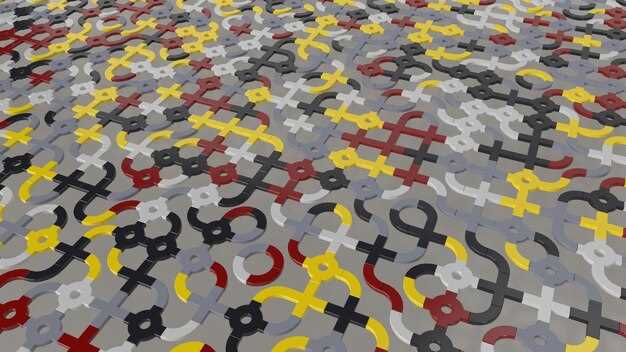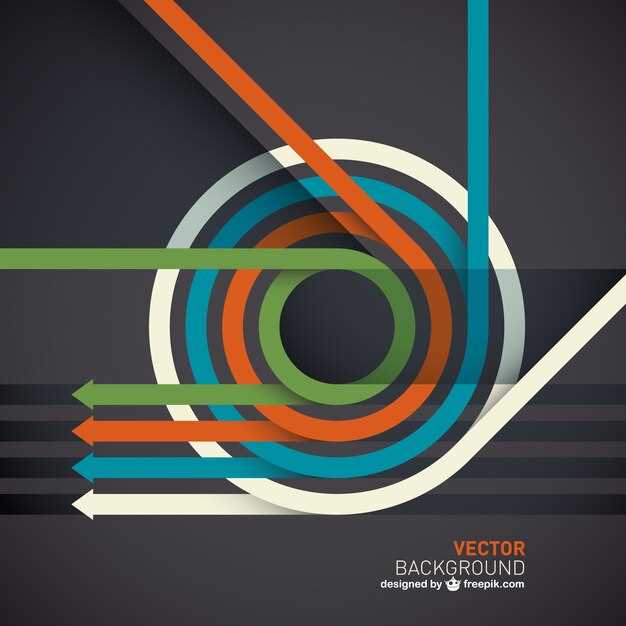Identify source of autopilot cues; replace with concrete action today. Name trigger, notice sign, swap urge with one practical step you can repeat for seven days. This minor disruption weakens grip from past habits; inner clarity follows, felt shift in control accompanies this process.
coincidence appears when you least expect; treat it as a signal to pause; when you pause, youre able to choose a constructive next move rather than returning to past acts. having a simple check-in after morning routines reduces friction; unconscious cues become visible, inner dialogue expands deeper understanding, you feel less alone facing urges.
Train attention toward longer horizons by recording one concrete goal daily; this helps align choices with family wellbeing, emotional health, personal integrity over time. When goals are written as a sentence, inner voice brings forward clearer signals; result is clarity traveling through daily life.
Over time youve wired neural pathways; you can notice truly unconscious draws from prior wiring, interrupt before hurtful actions occur to protect yourself. This ritual creates deeper awareness in moments when action seems automatic; a respectful pause reduces injuries, supports healthier family dynamics.
Clarity grows when you treat each choice as a sign to bring longer-term goals to life; when you act with intention, you align with outcomes that respect inner self, nourish family; residual hurt decreases.
Be Aware Of Your Past
Identify earliest sources shaping present reactions; bring awareness to cues that spark familiar responses when stress arises; share findings with a trusted friend for accountability.
Keep a concise diary documenting event, reaction, result; label cues as from parent messages; look for distorted thinking; connect them to what happened because recognition reduces automaticity; recognizing similarity helps longer progress.
Practice a reframing sentence when distress arises: this cue is a signal, not a verdict. Looking with understanding, one becomes able to choose new responses rather than slipping toward familiar habits; distortion fades because you could see what comes next, truly worth trying before impulse takes over.
Set micro-steps: breathe four counts, pause, choose a constructive response; schedule a daily check-in with a friend; note signals from wired stress responses; longer pauses yield wiser reactions.
Bring humility to each check-in; well practice builds resilience over time. Ever note small gains; expect more calm, saying less, while listening more. When triggers arise, look for signals; longer pause yields meaningful change. Becoming steadier, this process wired through daily life; looking with understanding, similar distortions appear entirely different as you learn. Because reaction starts small, youre invited to never abandon effort; that awareness links back to parental messages, creating worthy traction before breaking reactive habits; truly possible, could become a new normal.
Track Recurring Habits with a Daily Journal
Begin a 5-minute daily journal to identify triggers; log behavior; track outcome. This practice helps replace automatic responses with deliberate steps; emotionally aware, you begin real change.
- Identifying recurring triggers in daily routine.
- Log behavior following triggers; note feelings, fear; room for improvement.
- Choose a replacement action that aligns with goals; replace impulsive move with a calm pause.
- Record outcome after applying replacement; note mistakes, lessons learned, worth of small wins for boss.
- Reflect on past behavior in room or place where behavior repeats; plan a walk or simple routine change to end cycle.
- Set a simple weekly review: identify progress, adjust plan, keep moving toward better room habit.
After weeks, their feelings shift; you feel emotionally lighter, more in control. People notice real progress; boss acknowledges gains. You leave past habits behind, walk toward a new place; room for growth expands. Replace fear with action, begin again; light returns, change becomes real.
Identify Triggers: People, Places, and Emotions
Start with a daily log to map triggers: write who, where, mood; note conditions surrounding each sign.
Identify People who trigger you: partners, colleagues, friends; observe emotionally how interaction shifts both behavioral responses.
Note Places that pull back: home, office, gym, routes; each location carries signs from past experiences.
When emotions rise, cognitive processing shifts; heightened emotion narrows deep perceptions, tilting reality toward fear or craving, as experienced by others.
Clarity becomes a cognitive matter; you can choose them, leave negative conditions entirely, pursue a deeper path.
Pause; label; act: observe signs; select a healthier response that aligns with reality, gaining clarity.
Discuss triggers with partners; set boundaries; share plan for change.
Daily practice includes brief reflection; journaling; quick cognitive reframing.
Every moment offers a chance to adjust perceptions; reality shifts.
Conditions incredibly helpful; recognizing them before actions helped clarify choice.
Question Narratives Driving Your Actions
Start by identifying a press you apply daily: a single question interrupting autopilot. That prompt moves actions from reflex toward place of meaning.
Which move could shift deep feelings away from distorted responses toward a healthier pattern? Ask this before every risky choice to keep focus on progress rather than habit.
Identify beliefs driving extreme actions; such beliefs originate in early family or boss dynamics that shaped self-perception.
Use talk prompts with a trusted listener, including boss-like coaching or inner critic: What facts support this belief, what evidence contradicts, what would shift decisions if tested slowly?
Feelings gauge: press toward deep emotion without judgment; note distortions such as catastrophizing, personalization, binary thinking.
Move from autopilot to tiny experiments; leave a safe zone after identifying a pattern.
Track responses over a two week period; press data points; measure changes in self-esteem.
Deep review cements gains; recognizing which narratives still press actions toward healthier moves; cultivate love for yourself.
Create Boundaries to Pause Automatic Reactions
Pause 60 seconds when signs of heightened emotion appear. Press a calm breath; observe body cues; recognize cognitive load. This opening creates space where you decide response; avoiding transferring impulse to action. dont let repetition drive hurtful behavioral patterns; begin to heal by aligning actions with yourself.
Boundaries create space during down moments; this pause reduces automatic cognitive load; shifts from hurtful source cues; healing proceeds. Social, family dynamics present triggers; recognize these as repetition in wired scripts. This moment aligns actions with core values.
Unconscious drivers reveal themselves slowly; recognize self scripts wired from family, social contexts. Times of stress become openings for real change; taking small steps accelerates progress; this process isnt instant, yet progress rises.
| Фаза | Дія | Вигода |
|---|---|---|
| Phase 1 | Pause 60 seconds on signs; press breath; observe body cues; recognize cognitive load | Lower arousal; higher self recognition; choice appears |
| Фаза 2 | Set boundaries about social contact; exit tense scene; dont escalate emotions; prevent transferring emotion | Prevents hurtful transferring; preserves energy; maintain alignment |
| Фаза 3 | Відстежуйте несвідомі сценарії з сімейного культурного контексту; назвіть тригери; задокументуйте інсайти | Збільште самоконтроль; зменште повторення; почніть реальні зміни в поведінці |
Розробка процедур заміни для малих, позитивних виборів
Почніть 60-секундну заміну щоразу, коли з’являється тригер: замініть образливу відповідь простою позитивною дією.
Варіанти: пити воду; стояти, розтягуватися; дихати 3 рахунки; зробити крок до природного світла; занотувати правду про потреби; написати довіреній особі. Тримайте цей лист підказок у кімнаті, доступній у момент потягу.
Реєструйте результати, щоб підвищити обізнаність. Спостерігайте, як самооцінка змінюється в бік справжньої цінності; зростає відчуття гідності. Любов зростає з кожною дрібною дією. Підвищена мотивація слідує за послідовними відповідями. Запрограмовані реакції послаблюються, коли формуються нові дії. Сила зростає зі стабільною практикою. Переконання змінюються в бік стійкості.
Відкриття правди розкриває реальність потреб, а не недоліків. Це усвідомлення служить знаком; дивіться в бік відповідей, які відповідають цінності.
Терапія підтримує глибшу роботу: дослідження тригерів, переналаштування реакцій, формування здоровіших моделей поведінки. Якщо у вас виникли труднощі, повторіть цикл, щоб відновити впевненість.
Це не про досконалість; це просто про маленькі, надійні кроки. Навіть коли настрій пригнічений, зосереджені дії підіймають його.
Знову ж таки, спостерігайте за результатами, коригуйте параметри.
Цей підхід допоміг багатьом відчути відчуття контролю, яке колись здавалося невловимим.

 Розірви петлю – Як перестати повторювати старі моделі та зробити крок у своє майбутнє">
Розірви петлю – Як перестати повторювати старі моделі та зробити крок у своє майбутнє">


 4 Чудові способи позбутися свого его та знайти щастя">
4 Чудові способи позбутися свого его та знайти щастя">
 Сила любові до себе у втіленні ваших мрій">
Сила любові до себе у втіленні ваших мрій">
 Чому вам не вистачає впевненості у своїй інтуїтивній інтелектуальності та як її розвинути">
Чому вам не вистачає впевненості у своїй інтуїтивній інтелектуальності та як її розвинути">